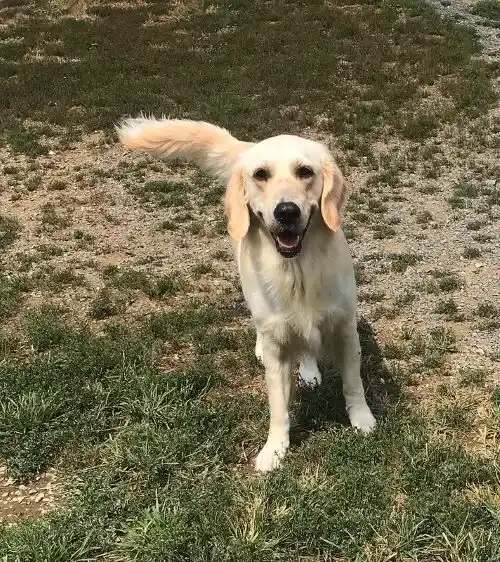How to Teach Your Dog to Come When Called

Learning to come when called is an important and life-saving skill to teach your dog, and it involves complex reinforcement of behavior. This behavior will simultaneously keep your dog safe and allow them more freedom. With so much to see and smell in the world, it can be difficult to get your pet’s attention.
Teaching your dog to come when they are called requires them to turn away from something potentially very interesting. For your dog to reliably return, we must teach our dogs that being near us is what will bring them the most reward. Studies have shown that positive reinforcement is more effective than the use of force, punishment, or shock collars. The dogs in a positive reinforcement environment learned faster and responded more quickly than those using negative association techniques.
Read below for some tips on how to best train your dog using positive reinforcement to come when called.
What is Reliable Recall?
According to the American Kennel Club, this means when you call your dog, you are nearly 100% sure that they are going to respond enthusiastically. This type of training may mean carrying a pocket full of treats for a few months. The goal is for your pet to respond to their name as consistently as possible. This skill is essential if you want to take your dog outside of an enclosed yard or dog park without a leash.
Learning to Train Your Dog to Return
The best way to teach your dog to come when called is to make training a fun game for your pet.
First, you should start in a low-distraction environment where your dog feels comfortable, such as in your home. Start by showing your dog a treat or toy and applaud them for coming to you, then reward them with the treat or toy.
After a few practices, when your dog starts to move towards you, add in your chosen verbal cue, such as “come” or “here.” However, be sure to only use the cue when you are certain your dog is coming toward you.
After your dog feels comfortable with this, you can increase the difficulty by calling your dog to come before showing them the reward. You can also start to slowly add distance and then eventually move to an environment with more distractions.
Play Recall Games
Games can make learning a new behavior fun and are a way to consistently reinforce the behaviors on a daily basis. Here are a few games you might want to try with your dog:
- Catch Me: While your dog is on a leash, get their attention and then change direction and jog a few steps. As your dog moves with you, say your verbal cue. After a few steps, stop and give your dog a treat.
- Hide and Seek: Once your dog has more experience with coming when called, you can increase the difficulty by calling them from a different room. When your pet finds you, give them lots of encouragement and a reward.
- Hot Potato: For an advanced level dog, give a few people a high-value treat. Stand apart and take turns calling the dog. Reward the dog each time they go to the person who called them.
Avoid Poisoning the Cue
Repeating your cue, such as “come” or “here,” too much can backfire and cause your dog to ignore it either because it is unclear or creates a negative association.
The American Kennel Club states that the most common way to poison a cue is to “overuse it by repeating the word repeatedly without your dog responding.” If you find yourself perpetually repeating a cue, your dog probably doesn’t understand it.
If this situation happens, the best remedy is to change your cue to something new. You could choose a different word; using a tool called a clicker can also be another option, as it can make positive reinforcement training more effective.
It also may be helpful to seek the help of a professional trainer, such as at Greenlin Puppy Obedience Training.
Training Tips
Some tips to help your training go smoothly:
- Practice new skills every day: Consistency is key when teaching a pet any new behavior.
- Never punish your dog for coming to you: Always praise a recall, even if they are frustratingly slow to come.
- Praise eye contact: When you notice your dog looking at you or choosing to be near you, reward them. This teaches them that being near you and paying attention is rewarding.
- Use their favorite treats and toys: Try to have on hand whatever your dog likes best, whether that is conventional treats, meat, or cheese. These will be the most effective reward.
- In an emergency, do not run after your dog. They may view this as a game and continue running from you. Instead, try running in the opposite direction from your dog to encourage them to chase you.
- Overcoming extra excitement: Playing with your dog throughout the day helps to burn off some pent-up energy, so they will be able to focus on learning the new skill.
Keep in Mind Greenlin Is Here to Offer Safe Fun for Your Pet
If you want help from an expert, Greenlin offers dog training to help both dogs and owners establish a consistent routine that can be practiced daily. Working with a certified professional trainer and your vet can be a winning combination for encouraging your pet to learn important safety skills, such as coming when called.
If you need to work or travel, Greenlin’s dog daycare can also give you the peace of mind that your pet is safe while you are away from home. We have manicured outdoor play areas and indoor climate-controlled play gyms for supervised fun in all types of weather.
For more information, please visit our website or call (717) 388-8110.
